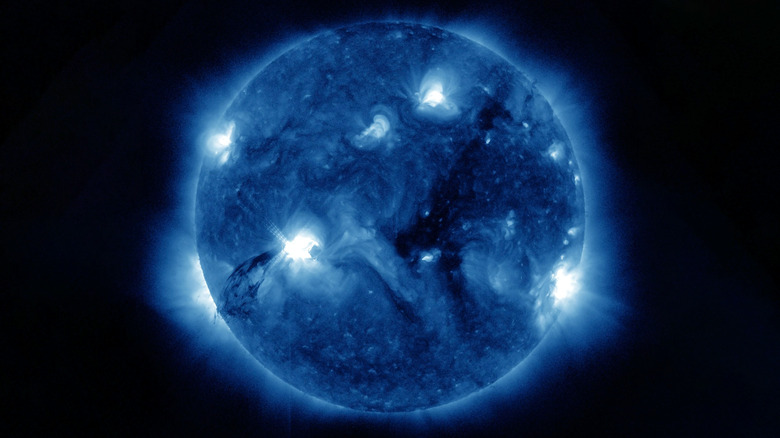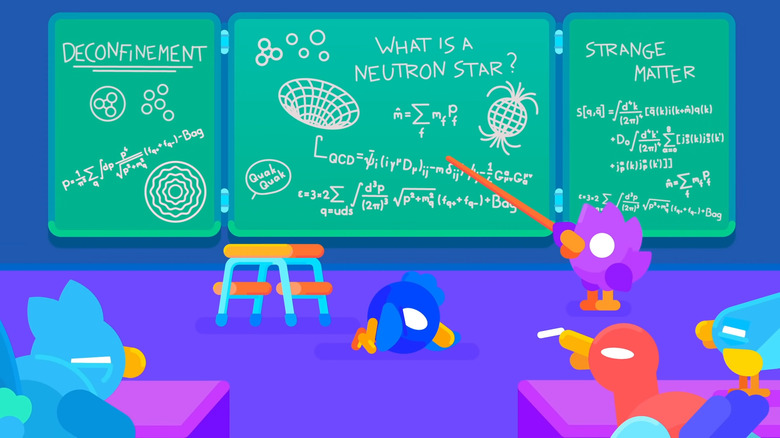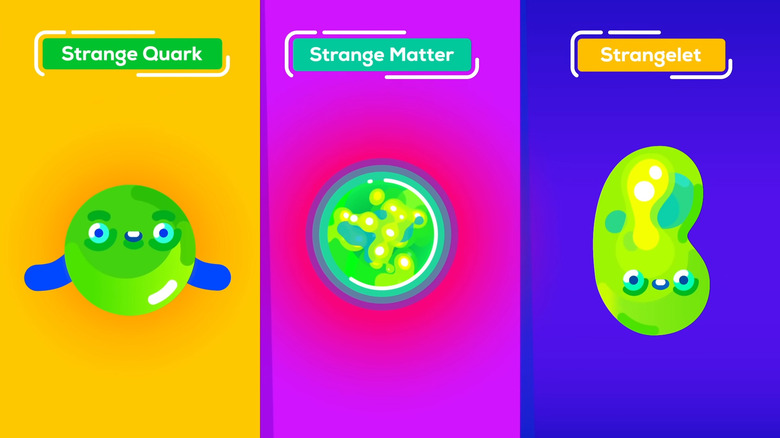Strange Matter Is The Most Dangerous And Mysterious Substance In The Universe
What happens when a star dies? It all depends on the mass of the star in question, but the variety of potential answers may surprise you. Over time, stars like our own sun will cool down and ultimately become dwarf stars such as a white dwarf. However, some stars collapse rapidly due to low pressure in the star's core, resulting in "supergiant" cosmic explosions. These supernovae are the biggest common explosions in the observable universe.
When very large stars combust in a supernova, they can produce certain types of black holes found across the galaxy, but the original star needs to have reached a mass of three solar masses to create the conditions needed to form a black hole (via NASA). By comparison, a single solar mass is the size of our own Sun, which is about 330,000 times greater in mass than the Earth.
Therefore, not all stars undergoing the end of their life cycle will become black holes. Instead, many medium-to-large stars can implode into something called a neutron star, which is best described as a dense sphere with a powerful gravitational pull toward its core, many times smaller than the star that created it, but filled to the brim with neutrons packed tightly together in an uncomfortable and highly unstable formation. Unlike black holes, from which light cannot escape, neutron stars are still visible to the naked eye. But the subject that interests some astrophysicists the most may be stored deep inside a neutron star's core.
Strange matter is theorized to form in the center of a neutron star
An ongoing nuclear combustion process within a star's core keeps gravity from compacting the star's mass inward. Once a star's hydrogen supply is spent, rendering the aforementioned nuclear combustion process unsustainable, gravity takes the wheel. As this happens, the star's excess contents blast off into space in all directions -– this is the supernova — and then one of two things happens.
The gravitational force exerted by the sun's surface, which is compelled to get much smaller due to outside pressure, can either convert the remaining stellar core into a black hole. If the core is sturdy enough to withstand the otherwise "grave" forces, the remaining electrons and protons will hypercompact into neutrons, generating a neutron star. Conditions could be so tense, however, that the subatomic quarks holding everything together could break the laws of nuclear physics entirely.
Most subatomic particles are composed of a combination of three quarks, called a hadron. In most cases, quarks tend to be inseparable from one another, but that may not always be the case inside a neutron star, where quarks are so tightly packed together that they could exist in a "soup," wherein freeform up and down quarks might move around independently. In 2004, researchers at Cornell University hypothesized the internal conditions of a neutron star could give way to hyperons, a type of particle that includes strange quarks; a quark that is so atomically "perfect" that it effortlessly converts the quarks around it into strange quarks, resulting in strange matter.
Strangelets could convert everything in sight
Not only does strange matter have the capacity to subsume any particles it comes into contact with, pulling even more quarks into the quark "soup," but it can supposedly travel outside of the core of a neutron star without any alteration to its nature. It may even be able to turn entire stars and planets into strange matter as well, researchers suggest, resulting in the possible discovery of "exotic" strange planets and strange white dwarfs. A neutron star fully converted into strange matter would be called a strange quark star.
According to Cornell University in 2019, the primary dispersion of strange matter from a strange quark star, in the form of fragmented strangelets, would likely take place during a collision between one or more strange quark stars. But what happens then? Some researchers believe that if a single strangelet were to come into contact with Earth's atmosphere, the strange nature of its atomic composition would allow it to turn everything on Earth into strange matter, a process that would be instantly lethal to all life on Earth.
However, it's probably not worth rushing out and strangelet-proofing your home. Nature published a report in 2017 that suggests strangelets could potentially be the very same theoretical dark matter thought to make up roughly 85% of the known universe's mass. If strangelets really are racing across the galaxy, it's likely that strange matter would be more common, and based on the assumption that strangelets effortlessly convert everything they come into contact with, we'd probably see more strange planets and strange stars. We've been alright so far, so it's probably nothing to worry about.


